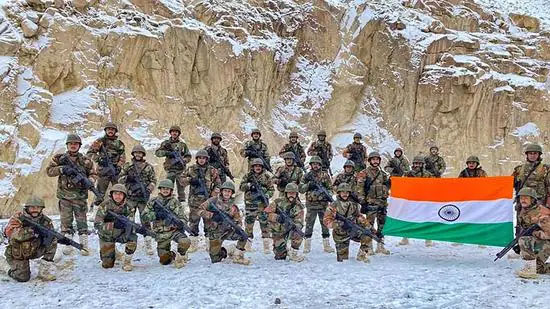India and China will hold the 14th round of military talks to discuss disengagement and resolution of the dragging border standoff in eastern Ladakh on Wednesday, three months after the last round of negotiations broke down with neither side agreeing to withdraw troops from the remaining friction points.
“As agreed by both sides, China and India on January 12 will hold the 14th commander level meeting on the Chinese side of the Moldo meeting site,” Chinese foreign ministry spokesperson, Wang Wenbin, said on Tuesday.
“Currently the situation on the border areas is stable on the whole and the two sides are in dialogue and communication through diplomatic and military channels,” Wang said when asked to comment on the talks and the situation at the border.
“We hope India will work to help the situation to move from emergency handling to a regular daily-based management phase,” Wang added.
DIFFICULT PHASE IN TIES
The two countries have held several rounds of diplomatic and military talks to resolve the standoff but the talks have only yielded partial results: Ties remain in a chill, the worst in decades.
Both sides had issued strong statements after the 13th round of talks ended in bitterness in October.
The People’s Liberation Army (PLA) said India had made “unreasonable” and “unrealistic” demands during the talks.
New Delhi said the Chinese side wasn’t “agreeable” and “…could not provide any forward-looking proposals” at the negotiating table.
Focus of Wednesday’s talks is likely to be on disengaging troops as soon as possible in all the remaining friction points – which has been repeatedly pushed by New Delhi – including in Depsang Bulge and Demchok.
In November, both countries had agreed to ease the LAC standoff by shifting from emergency response to “normalised control” of the disputed boundary, a statement from the Chinese foreign ministry said after the 23rd round of the Working Mechanism for Consultation and Coordination (WMCC) on border affairs was held via video link.
BORDER STANDOFF SINCE MAY 2020
The two sides had then also agreed to “consolidate” the results in the areas where troop disengagement has taken place and prepare for and hold the 14th round of military talks soon.
Indian and Chinese border troops have been locked in a border standoff in eastern Ladakh since May, 2020, when a violent clash in Pangong lake area led to both sides gradually deploying tens of thousands of soldiers as well as heavy weaponry along the border.
Several rounds of military and diplomatic talks have only resulted in partial disengagement of troops until now.
India has repeatedly and consistently rejected China’s allegations that Indian troops crossed over to the Chinese side of the Line of Actual Control (LAC) in eastern Ladakh, asserting that New Delhi has always taken a responsible approach towards border management and maintaining peace and tranquility in the border areas.
In August, Indian and Chinese troops had withdrawn from the Gogra area in eastern Ladakh, which marked the second round of disengagement in 2021.
It came six months after India and China pulled back troops from Pangong Tso, a Himalayan lake.
PLA’S PROPAGANDA
Ahead of the talks, China’s PLA has stepped up propaganda on the ongoing standoff with its western theatre command (WTC) — which oversees the disputed border with India – announcing on January 7 that it will offer stones from the Galwan Valley in eastern Ladakh to netizens on February 1.
The WTC opened its official account on Twitter-like Sina Weibo on Friday and released a notice that on February 1 it will “..randomly choose 10 lucky netizens from those who reposted the notice and send them a stone from the Galwan Valley as a present,” the tabloid Global Times said in a report on Friday evening.
It was the Chinese government’s latest effort to use the brutal clash between Indian and Chinese soldiers on the night of June 15 in Galwan Valley as propaganda to push through its narrative, painting India as the aggressor.
While India lost 20 troops in the clash, four Chinese soldiers were also killed.
On January 1, Chinese official media released a video showing Chinese PLA soldiers unfurling the country’s flag somewhere in the Galwan valley.
Last October, it had released another video showing hundreds of PLA soldiers from unit 7895 of the Xinjiang military command standing in rows and shouting military slogans on the rocky banks of a river, flowing through a ravine, between cliffs.

